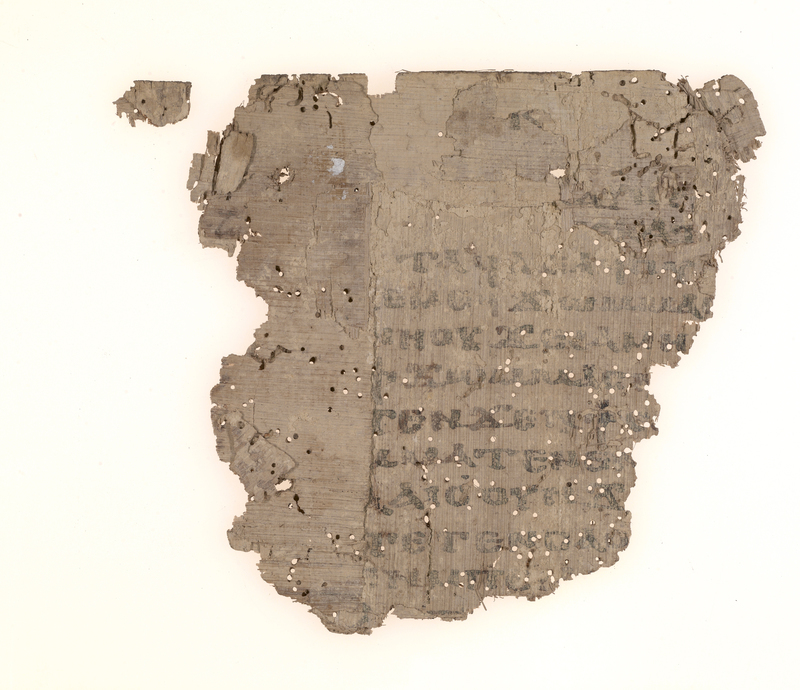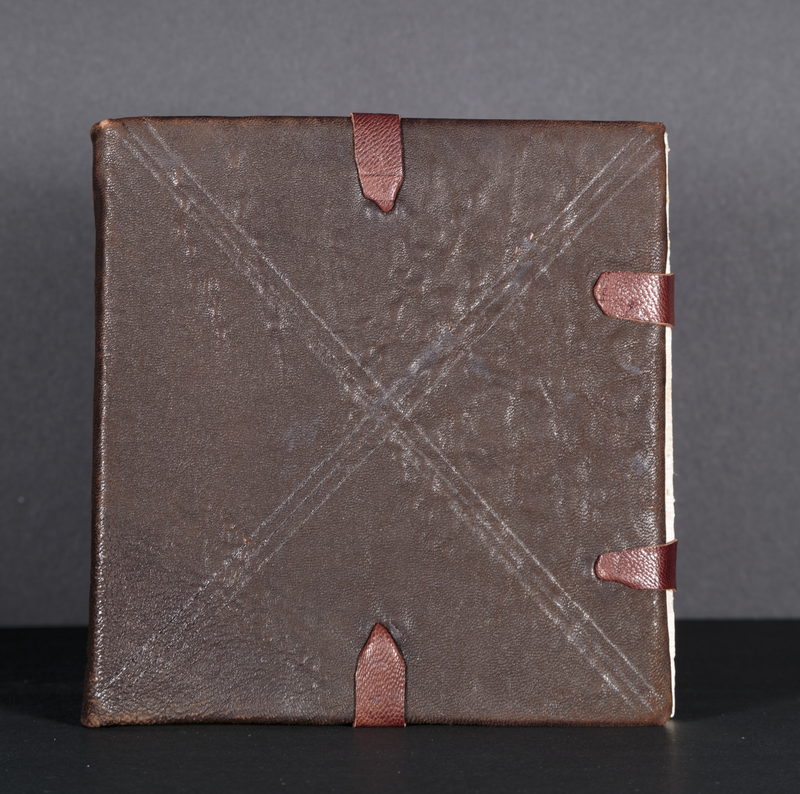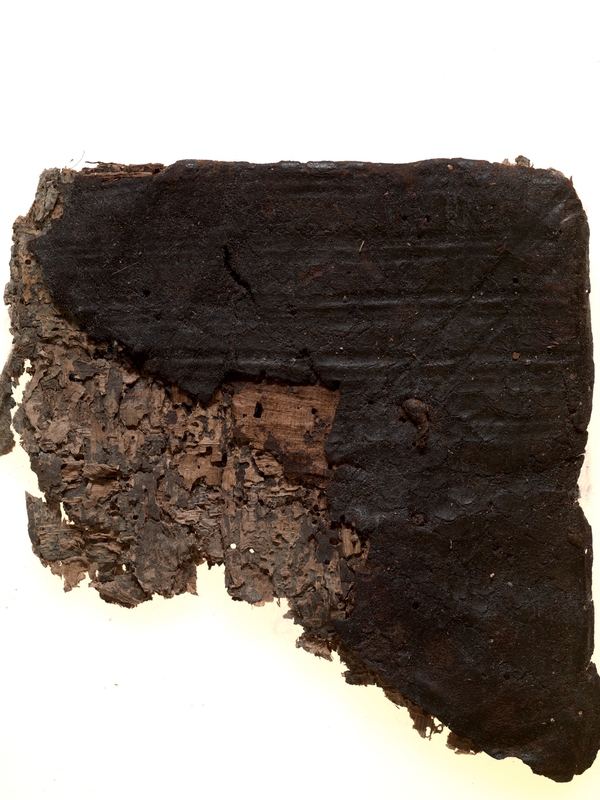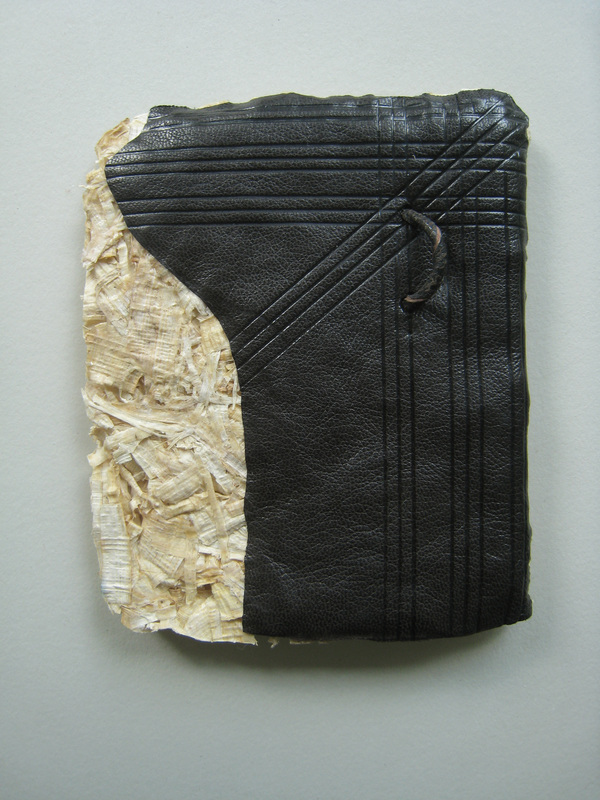Cartonnage & Decorated Leather Cover Fragments
P. Mich. Inv. 542 (verso)
A piece of cartonnage that once formed a book board for a codex; when intact the board was roughly square, a typical format for Coptic codices; the text was probably similar in size to P. Mich. Inv. 593 described earlier. The cartonnage layers included some inscribed/recycled papyrus fragments, very typical. Such clumps of cartonnage are often delaminated in order to see if they contain important text fragments.
Model of P. Mich. Inv. 542 (upper cover)
The following two model images illustrate what the cartonnage forming P. Mich. Inv. 542 may have looked like when intact as a book cover. The leather cover of the model is lined with papyrus cartonnage and is simply decorated with scored lines. The image on your right is the upper cover.
Model of P. Mich. Inv. 542 (lower cover)
Here is an image of the lower cover of the same model. The straps leading from the upper cover end in rolled leather toggles; these toggles catch under loops on the lower cover, which you can see happening in this image.
P. Mich. Inv. 7078
A corner fragment of a book cover with decorated leather on one side and cartonnage on the other. The fragment was only recently assigned its inventory number, and no record of its accession has been located. The fragment measures 12.8 cm by 11.5 cm and is 1 cm thick. We cannot know if this is the upper or lower corner of the upper or lower board, but we can definitely identify the fragment as a corner of a larger, full-leather cover. The most telling evidence is the leather curving around the edge of the board just as a turn-in located on the outer corner of a board would. The other evidence that this is an outer corner are the stub ends of a leather thong visible on the leather-covered side extending from two holes pierced about two centimeters in from the fore edge, as well as the knotted/wrapped ends of the leather thong on the inside of the fragment.
P. Mich. Inv. 7078 (verso)
Here is an image of the inside (verso) of this board fragment. The papyrus cartonnage forming the board included some inscribed fragments. The edge of the leather turn-in is obvious, as is the tied ends of leather that once formed an attachment loop.
Tooled Leather Model of P. Mich. Inv. 7078
Lighter-colored leather is used here to illustrate the tooling pattern on the original leather fragment, which is so dark that the pattern is hard to distinguish under regular light. The scored or tooled pattern of decoration consists of multiple border lines around the board edges, and multiple lines were also tooled diagonally corner to corner, creating a saltire (or X) pattern, a very typical style of decoration on Coptic bindings.

Decorated Leather Cover Fragments
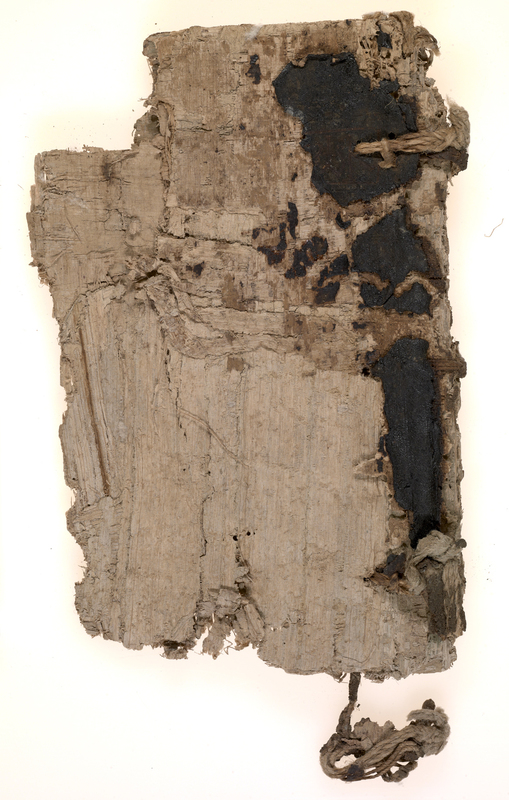
A Board Fragment with Structural Elements

